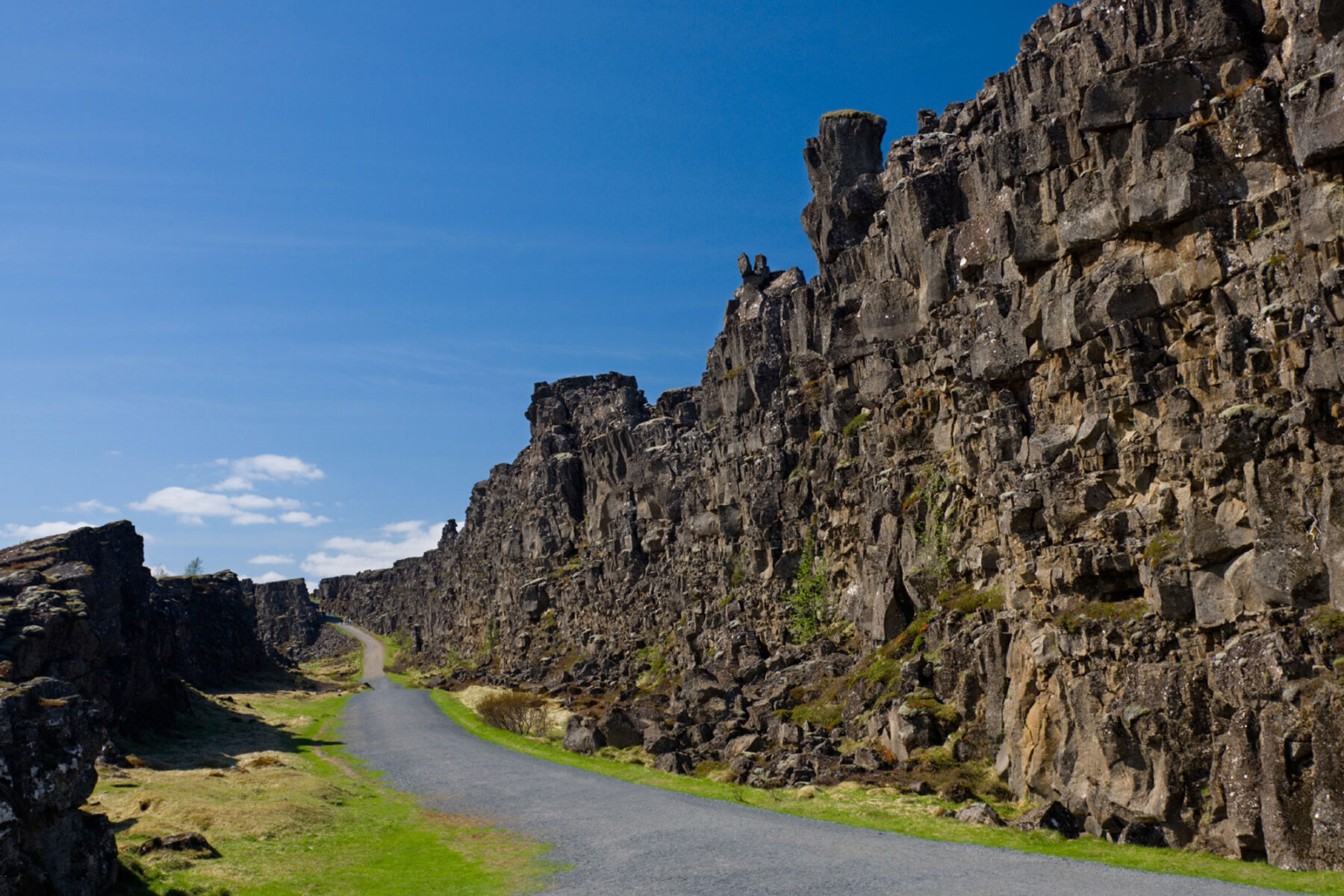
Why Study in Iceland?
Iceland offers scope for a variety of study topics and is ideal for geography, geology and biology to name a few.
In less than a 3 hour flight your students can discover truly a unique European destination, home to spectacular glaciers, glorious mountains, wild gorges, stunning waterfalls, active volcanoes and a raft of geothermal features all wrapped up in a centuries-old Norse culture. Iceland provides your students with invaluable hands-on experience in an array of specialist subject areas:
Plate Tectonics
Iceland’s unique landscape owes much to its position on the Mid Atlantic Ridge – the boundary between the North American and Eurasian tectonic plates. This is one of the few places in the world where you can see an active spreading ridge above sea level with the two plates widening by approximately 2.5 centimetres a year. As a result Iceland has extensive volcanic and geothermal activity.
Glaciations
Approximately 11% of Iceland is covered in permanent ice, mostly in the south. Icecaps, corrie and valley glaciers are clearly represented. Their margins are easily accessible and the landforms that they produce readily studied. Being temperate glaciers they produce a lot of meltwater, which carries vast quantities of fluvioglacial material towards the sea. The characteristics of these outwash deposits and the fluvioglacial features associated with them can be studied in several localities.
Large deserts of sand and gravel, appropriately called sandurs (sandur is the Icelandic term for an outwash plain), make up the ever-changing coastline of much of southern Iceland. Outwash deposits are augmented by volcanic debris carried and dumped by raging torrents of water melted from underneath ice sheets by volcanic eruptions. These “glacier bursts”, also known as jokulhlaup, can easily sweep away road bridges which are not carefully designed to withstand the deluge. Icelandic glaciers advanced in the 1750’s and, in retreat, have left a legacy of kettle holes and relatively fresh lateral and terminal moraine to study. Some periglacial features are shown, most obviously the vast aprons of scree but also most delicate stone stripes and polygons.
Soil Erosion
Iceland experiences some of the most extensive soil erosion in the world which is caused by a combination of a lack of vegetation cover, steep terrain, high rainfall, frequent volcanic activity and over-exploitation of the land. Take a guided tour around a soil conservation site to learn how desertification affects plant species diversity and about measures taken to reduce erosion and reclaim eroded land.
Climate Change
Due to large volcanic eruptions and changes in solar output the country has been the focus of climate change studies. Visit the Icelandic Met Office and join a seminar on the latest Climate Impact Assessment for Iceland.
Natural Hazards
Iceland has some of the most advanced systems in the world to manage natural hazards, whether it is earthquakes, volcanic eruptions, avalanches or glacial outbursts – Icelanders have a long-standing ability to manage the forces of nature.
Volcanic eruptions occur on average every 5 years in Iceland, offering an abundance of natural hazard management case studies. The Eyjafjalljokull volcanic eruption in 2010 covered the immediate local area in ash causing a mass clear up operation. The eruption occurred beneath an icecap causing melt water floods (also known as jokulhlaup) to rush down nearby rivers and it is here you will have an the opportunity to drive across the flood plains and see the effects of this and the engineering employed to prevent wider destruction. Take an optional 4WD trip to see where a lake has now been completely filled in by the glacial burst, or perhaps visit the Nordic Volcanological Centre at the University of Iceland to discover more.
Renewable Energy
The country is at the forefront of renewable energy research and plans to become the first ‘hydrogen
economy’. This would make it the first energy independent country in the world using 100 per cent renewable energy. Visits to the Geothermal Power Station and the Hydro-electric Power Station provide excellent opportunities to view first-hand renewable and sustainable energy in motion. Seminars with leading scientists can also be arranged.
Ecology
The very nature of Iceland’s isolated location, climate, geology, volcanic and geothermal activity means that it provides a unique habitat for vegetation and wildlife. Iceland is an ideal destination for marine and terrestrial studies and the investigation of evolution and speciation. Explore the evolution of the Arctic Charr from one species to four sub-species at Lake Thingvallavatn, an instance found nowhere else on Earth. Observe a plethora of cetaceans from the white beaked dolphin to the blue whale and uncover an array of birdlife including waterfowl, waders and a wide variety of sea birds (season dependent). Or perhaps study Iceland’s unique hot spring ecology.
Photography
Iceland provides an excellent environment for photography. The unique interplay of light and shadows, crystal clear air, the midnight sun in summer, aurora (northern lights) in winter, the spectacular geology, landscapes and wildlife, all cause a magnificent tapestry of changing colours and photo opportunities unmatched elsewhere in the world.